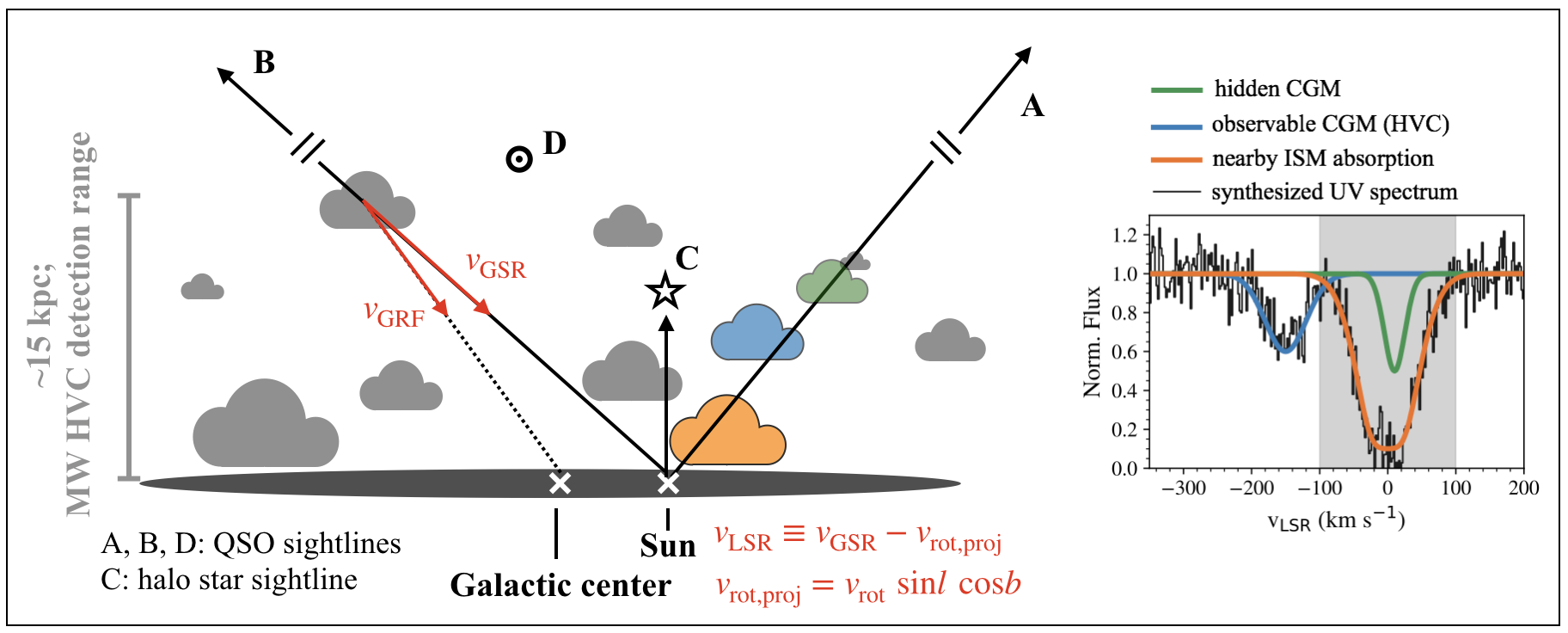The Mocky Way
Investigating Biases in Observing the Milky Way’s Circumgalactic Medium (CGM)

Schematic illustration of four observational biases inherent in the Milky Way’s CGM studies. Becase of our vantage point inside the Milky Way, our lines of sight have to pass through abundant dense gas inside and near the disk as we observe the CGM. The unique viewing location from the Sun cause foreground contamination in studies of the Milky Way's CGM in both position and velocity space. We explain and quantify four biases in the following based on mock observations of a Milky-Way analog from FOGGIE.
Bias I: toward sightline A, we estimate the fraction of the CGM mass omitted by QSO absorption-line studies.
As shown in the inset spectral panel, only the high-velocity part of a UV spectrum is available to study the
Milky Way's CGM. The low-velocity CGM gas is not accessible due to heavy contamination of the Milky Way's ISM.
Bias II: toward sightline B, we show that gas infall rate estimates for the Milky Way's CGM could be highly biased
because gas velocities are measured relative to the Sun instead of the Galactic center.
Bias III: combining sightline A (QSO) and C (halo star), we investigate whether QSO absorption lines are
sensitive enough to probe the Milky Way's outer CGM beyond ~15 kpc and which ions are the best tracers.
Bias IV: we look into the difference between the Milky Way's CGM (inside-out views; e.g., sightline A, B, C)
and those of extragalactic systems (external views; e.g., sightline D), and investigate how the differences
are related to the gas structures in the CGM.
Publications:
Zheng et al. (2020) "Figuring Out Gas and Galaxies in Enzo (FOGGIE). III. The Mocky Way: Investigating Biases in Observing the Milky Way’s Circumgalactic Medium;
ApJ, 896, 143
NSF AST-1517908, 1514700, HST AR #15012, Miller Institute for Basic Research in Science